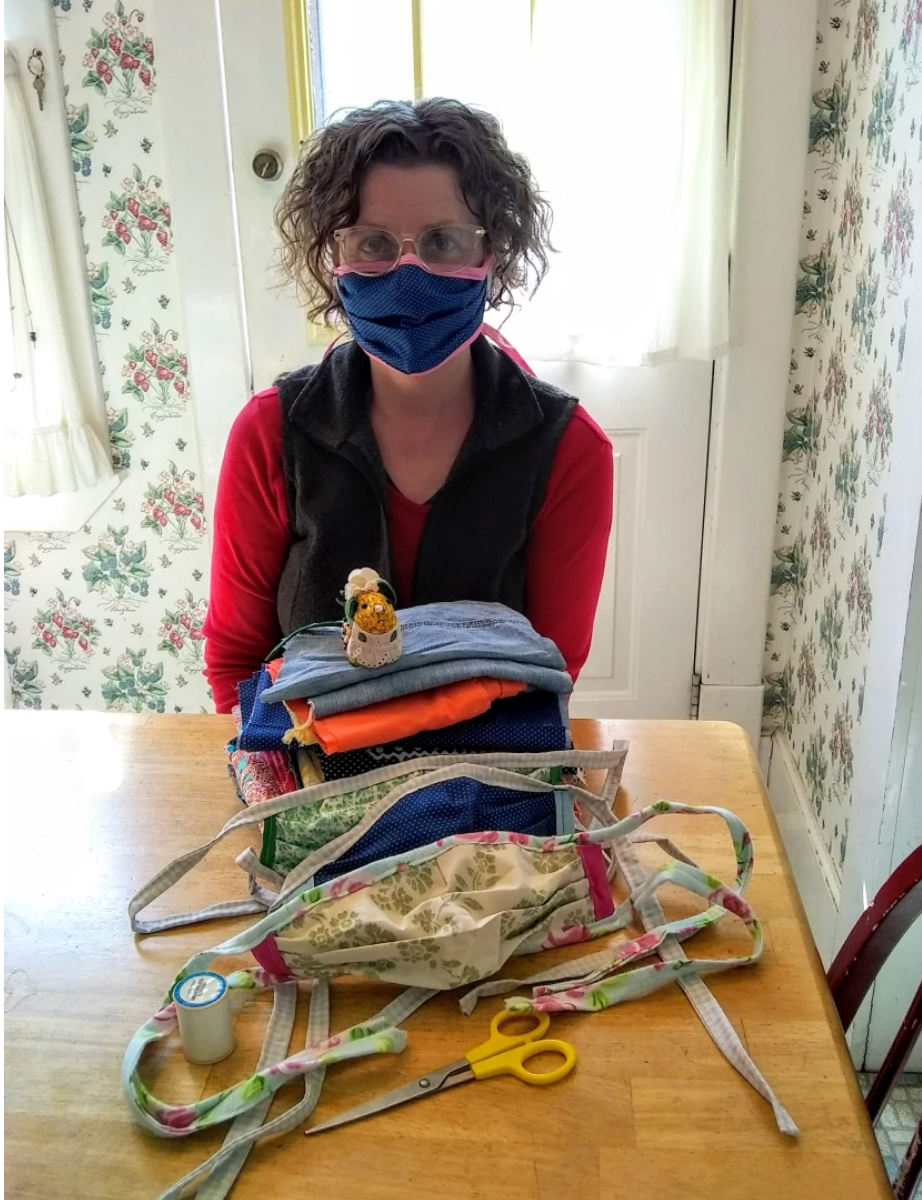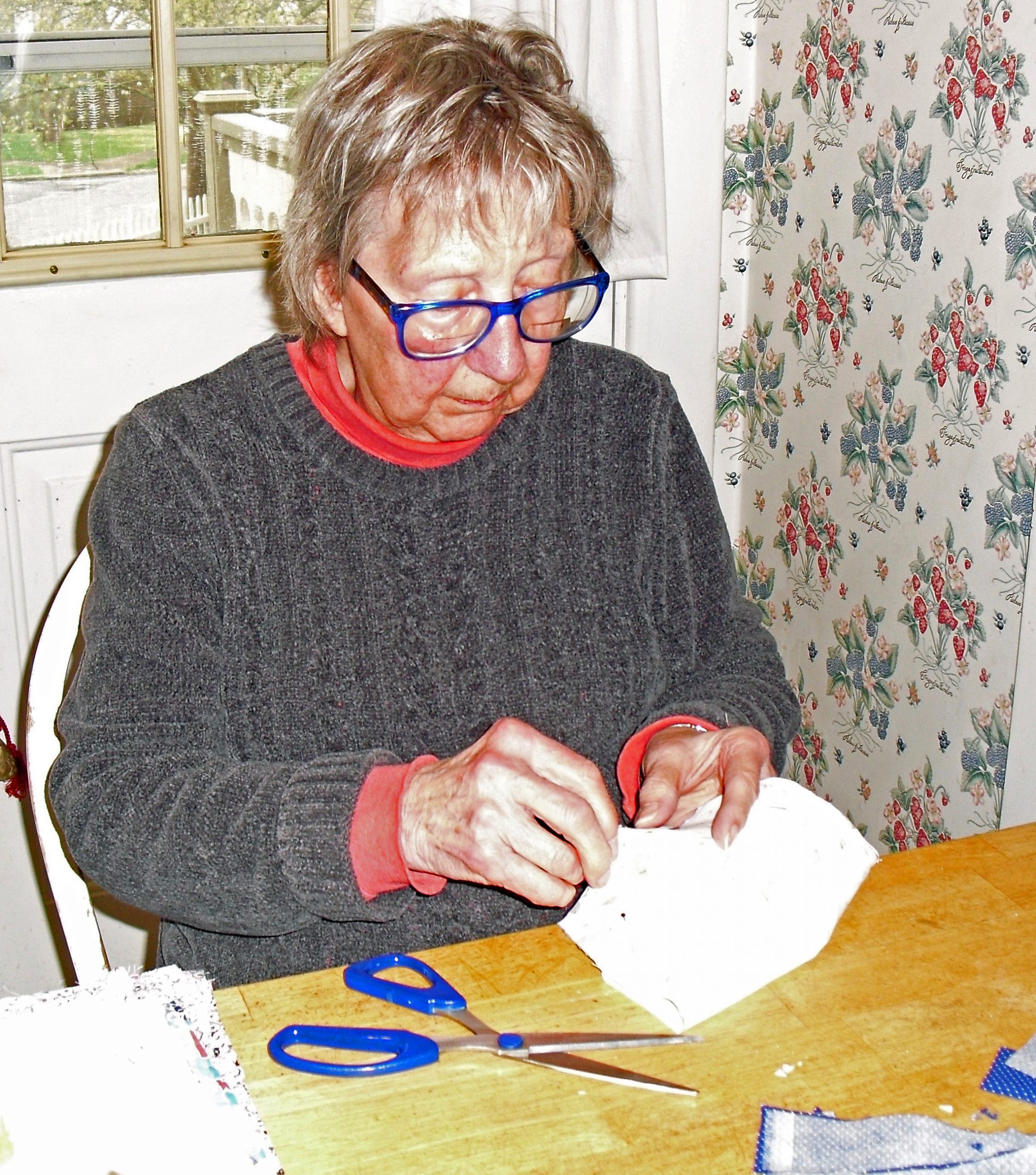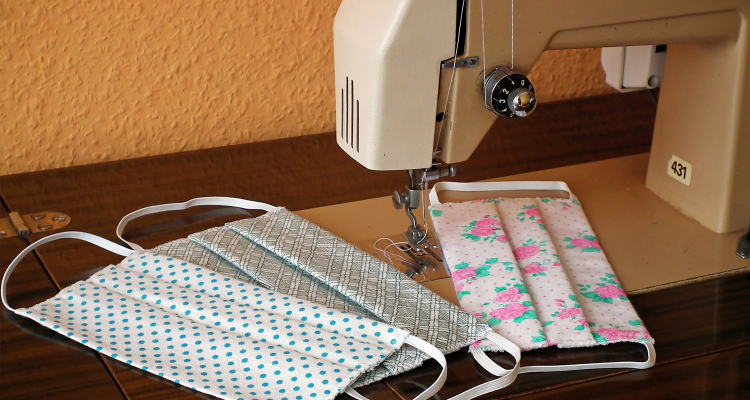Editor’s note: Have you noticed lately that bits of the past are creeping into the present? We’re gardening more, going to drive-in movies, spending time with nature, putting jigsaw puzzles together. We are finding that these traditional pastimes are somewhat calming in this time of COVID-19. Weelunk’s series, “Bygone Comebacks,” will take a look at some of the ways we’ve been slowing down. Today’s post looks at the craft of sewing and a family tradition that began with a nugget found in the California Gold Rush of the mid-1800s.
When both Wheeling and our children were still new to our lives, the Oglebay Mansion Museum was one of a handful of places that helped maintain my sanity. The museum was cool when it was too hot to play outside, dry when it was rainy, warm when the snow was swirling.
Our daughters loved the story about a long-ago Oglebay kid riding his horse right into the house and one short-term exhibit that allowed them to try on vintage clothing and hats. I loved, oddly enough, the mansion’s sewing room. It was one space in the sprawling, so-so-fancy complex to which I could actually relate.
Many households in my family have or have had sewing rooms — a quiet space dedicated to crafts made for church fundraisers, the assembly of generations of baby quilts and, until quite recently, the making of clothes.
Some of my far-flung cousins even went so far as to make wedding dresses during the 1980s — when snow beasts were known to roam up petal-strewn paths.
A HISTORY NUGGET
Sewing rooms or, more specifically, the sewing machine that is given center stage in such a space are a bit of an obsession in my family. It all started with my great-great grandmother Sylvia. In addition to being a wife and mother, she was a mid-1800s mid-wife whose colorful exploits included spending a gold nugget found by her brother during the California Gold Rush to buy a treadle sewing machine.
Instead of sewing family clothes with mere finger power, like others in her Appalachian valley, Sylvia was able to work at comparative Star Wars speed. Her feet rocked a treadle that drove the machine’s needle up and down. It must have been hard to feed the fabric through quickly enough.
“It was the first sewing machine in the county,” I remember my grandma Alberta saying with pride.
Grandma Alberta loved Sylvia, who raised her, and was equally ready to embrace all things new. Indeed, Grandma Alberta moved to California, flew on jets, took a cruise to Alaska and wore an orange hat made of fake fur when few others were doing such things. She also, of course, sewed with a machine. Hers was an electrified Singer that buzzed along at speeds that would surely have made Sylvia smile.
All of Grandma Alberta’s daughters, daughters-in-law and granddaughters learned to sew, delighting in new advances such as computer-driven machines that could probably launch a satellite if one hit the correct combination of buttons.
Then there was me.

NEEDLED TO SEW
The only machine I ever tolerated was, ironically enough, a treadle one. This one — not Sylvia’s, but one from a generation later — sat benignly in our living room, covered with a lamp, a lace cloth and family photos. At least until I hit middle school and was forced by the Powers That Be to take a home economics class.
I hated this class, primarily because of the school sewing machines, which rose out of Formica-topped tables like great white whales. Great white whales with hyperactivity issues. Wheels were spinning. Needles, thread spools and bobbins were whirring. The classroom was full of tiny motors that, together, roared like a jet engine.
It was frankly terrifying. So much so that I somehow convinced my teacher that I should do pattern tracing — a newbie-sewer activity that involved feeding a piece of paper under the needle along a printed line — at home. Where, of course, I used the treadle machine. It was quiet. It was slow. It was also back breaking. Great-great Grandmother Sylvia was obviously a closet Olympian.
I gave up on machines entirely not long after this. A stuffed elephant I was supposed to be making for the class never got one ear. The pocket of my other project, a very ugly tote bag, didn’t have a bottom. I think I got a B, more than I deserved. But, the silver lining to the class was that the home ec teacher also introduced me to embroidery during a lull in activity. Hand-powered embroidery.
So, while the other members of my family were making and mending their own quite lovely clothes and occasionally earning ridiculous amounts of money doing alterations for other people, I was free-handing maiden-hair ferns and thistles onto the edges of pillows. I moved on to art quilts — a mix of hand-pieced shapes quilted in Oglebay-era tradition as well as in modern bursts of text and embroidery and appliqué. Still later, I did fabric sculpture.
MENDING THE MASK SHORTAGE
Having staked out this artistic spin on the family tradition, I was content (and family was off my back). Until COVID-19 struck and the need for masks was too high and too immediate for hand sewing to supply. I realized this after making just one nicely executed — but painstakingly slow — model.
So, I dragged out the whiz-bang machine my husband bought for me not long ago in hopes I will someday slipcover a vintage couch that he loves. Having had only a single afternoon of machine instruction since middle school, I was sweating just trying to get the thing threaded. I came close to tears when I had to fill a bobbin. It didn’t help I could only find the Spanish language instructions.
Somehow, though, it worked. The newest machines are so forgiving the spool thread and bobbin thread link themselves together by magic. I managed to sew enough masks to cover my household. Then, my mother, who sews quite well herself but whose sight isn’t the best now that she’s in her early 90s, began offering them to extended family and church friends by phone.

It was a sobering moment. People I love could actually die if I failed to fill and ship these “orders.”
So, I sewed and sewed. And, by mask 10 or 11, I was both competent and hooked. I was fast. I was powerful. Or, at least my machine was fast and powerful. We formed an assembly line. My mother cut out the various pieces of the masks. My daughters selected fabric combinations and pinned things into place. I did the pleating and sewing.
It helped that the same thing was happening literally next door and across the street. It turns out that, while sewing rooms like the Oglebays had may be a rarity these days, lots of Wheeling women (and men) have machines stashed in a basement or attic and know how to use them.
When homemade mask demand died out, the mass production stopped. I don’t know what happened at other houses in our Woodsdale neighborhood, but our machine was put away. We moved on to figuring out how to work and school at home as a group, and spring cleaning as a group and fostering a teacher friend’s classroom guinea pig, well, as a group.
But, one recent day, I noticed there were a couple of curtain hems that had frayed in the wash. I briefly considered repairing them by hand. Nah. The machine came back out. Zip, zip. Then, there were two pillows I had been meaning to slipcover. Zoom. And, wouldn’t you know it, that vintage couch really could use a new look.
Thanks to COVID, on it goes. Great-great Grandmother Sylvia would surely be proud.
• A long-time journalist, Nora Edinger also blogs at noraedinger.com and Facebook and writes books. Her Christian chick lit and faith-related non-fiction are available on Amazon. She lives in Wheeling, where she is part of a three-generation, two-species household.


